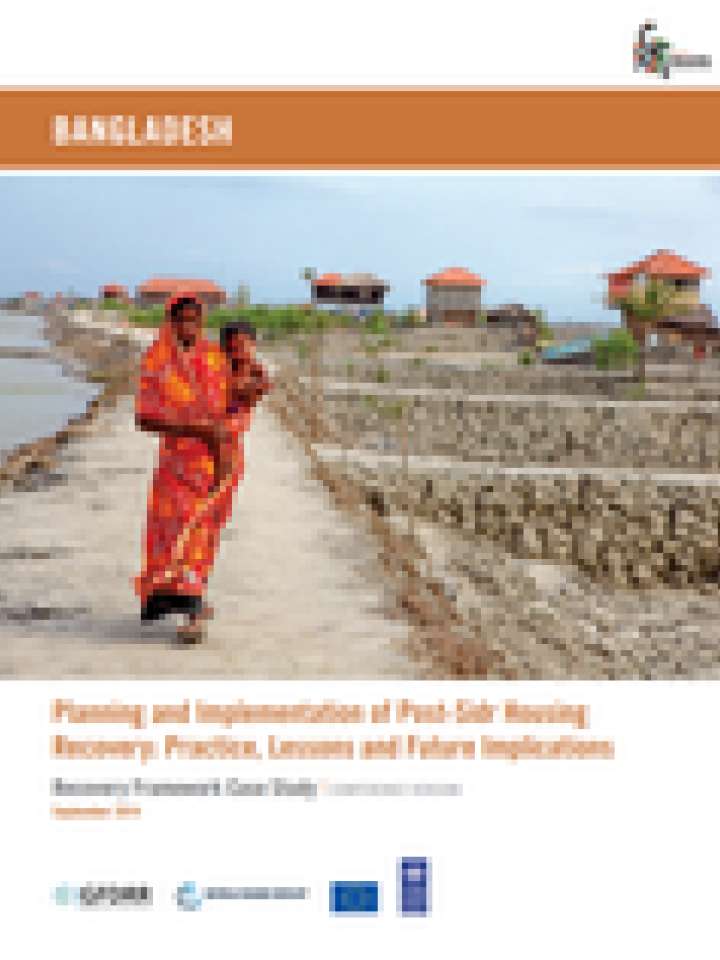Recovery framework case study: Bangladesh - Planning and implementation of post-Sidr housing recovery, practice, lessons and future implications
This case study was conducted in 2014 to document the lessons learned from the housing recovery operation carried out in the wake of Cyclone Sidr that hit Bangladesh in 2007. The cyclone, which caused damage to over a million houses, prompted arguably the largest ever housing recovery in the country’s disaster history. In a first, housing was considered an integral component of a principle-led recovery that sought to reach out to the most vulnerable sections of society, as opposed to random repairs and reconstruction of houses in the past. The recovery operation, influenced by an array of national and international agencies and their strategies and approaches, has brought about a visible change in the housing recovery practices of Bangladesh. Thus, the post-Sidr recovery operation offers important lessons for Bangladesh and other countries in shaping effective post-disaster recovery guidelines.
The themes discussed in this report are specific to the post-Sidr housing recovery, namely: (i) the institutional mechanisms to implement and manage recovery; (ii) policies, planning and prioritization for recovery; (iii) designing, costing and financing recovery; and (iv) monitoring and evaluation for disaster recovery.
Explore further
